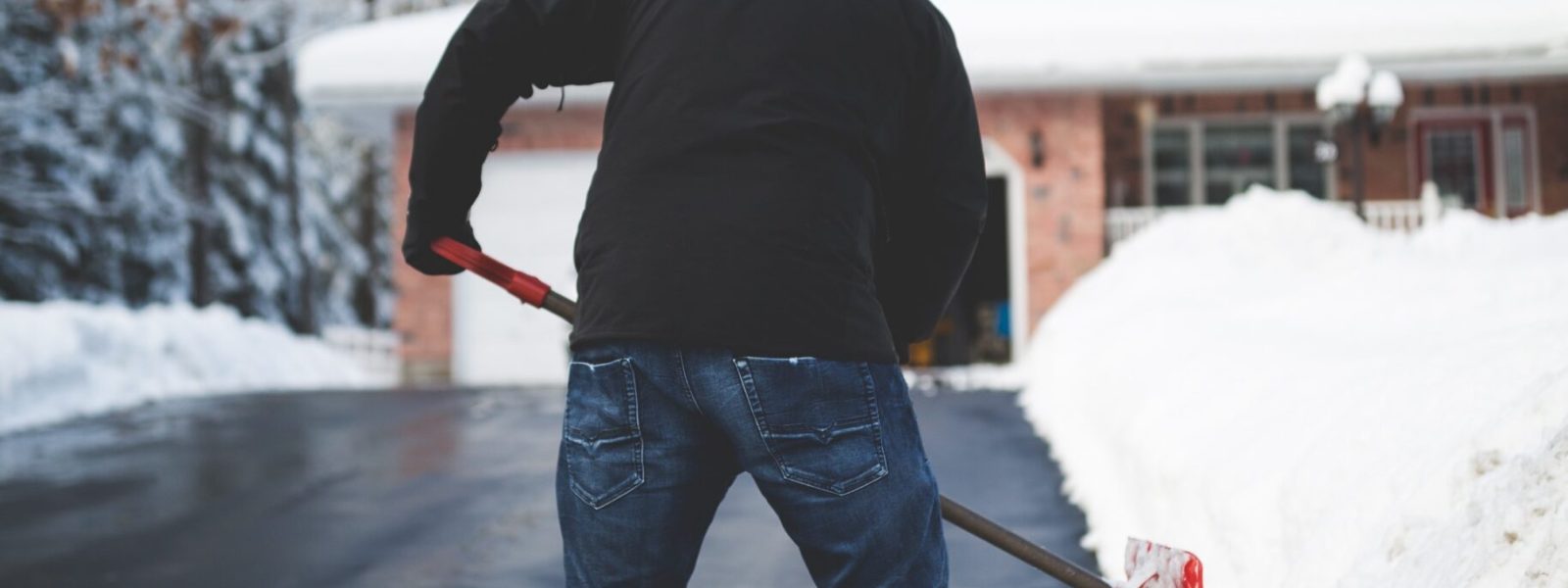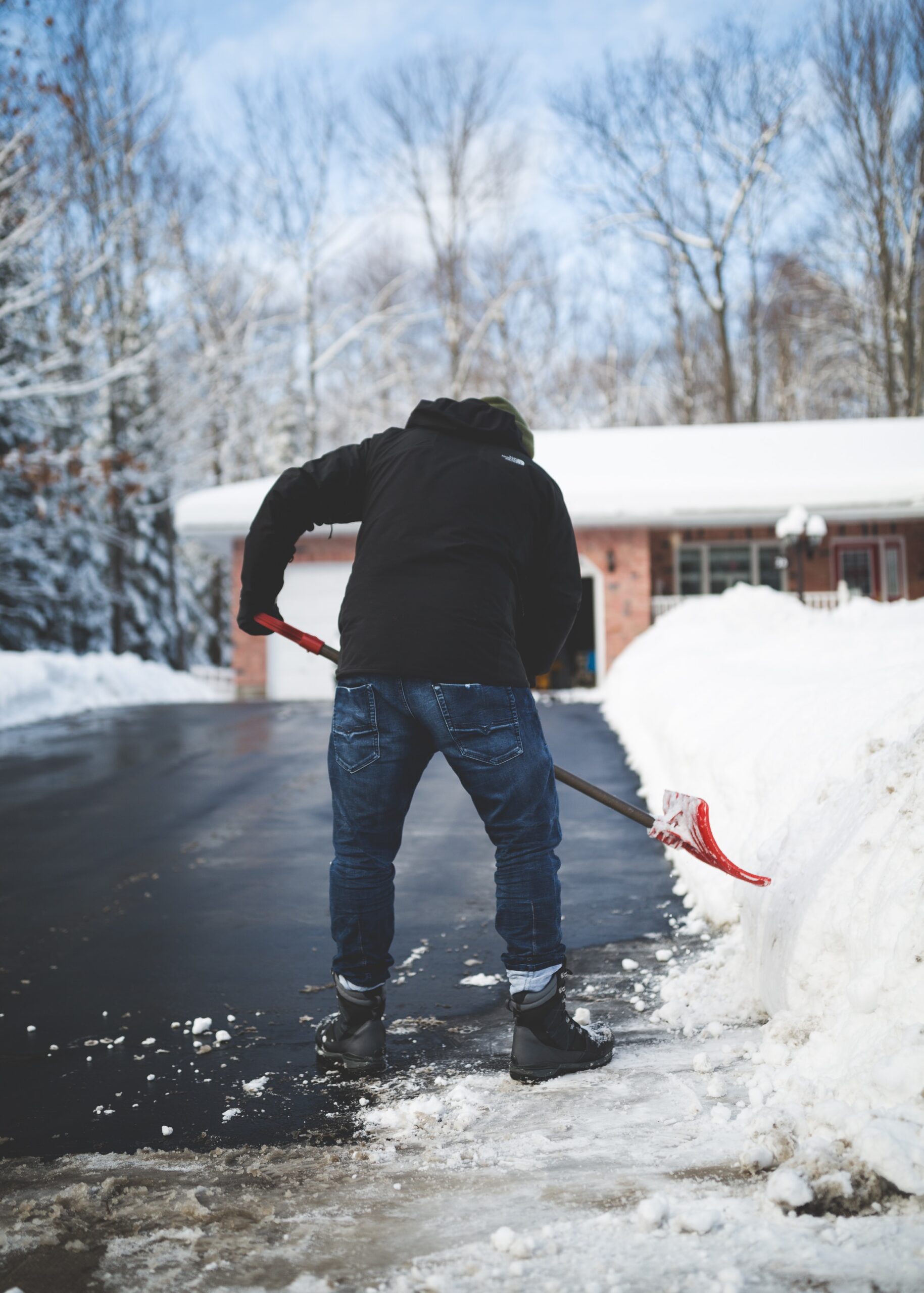Are you ready for winter in the GTA?
Did you know that the average temperature in Toronto during the coldest months is -6°C?
To keep your home warm and cozy, it's important to prep for the colder weather. In this article, we'll show you how to weatherstrip and insulate your doors, seal and insulate your windows, and make sure your roof and gutters are in good shape.
Get ready to winterize your home and stay comfortable all season long.
Key Takeaways
- Weatherproofing and insulation: Check and replace weatherstripping on doors, inspect and improve insulation of doors, seal cracks and gaps around windows, use weatherstripping or caulk to seal windows, consider using window film or thermal curtains.
- Roof and gutter maintenance: Inspect and repair roof for missing or cracked shingles, clear out debris from gutters and downspouts, consider installing gutter guards, check seals around vents, chimneys, and skylights.
- Plumbing winterization: Insulate exposed pipes in unheated areas, use pipe insulation sleeves or heat tape, insulate water heater and hot water pipes, drain outdoor water hoses and shut off exterior faucets.
- Heating system maintenance: Change furnace filter regularly, clean vents and ducts to remove debris, schedule a professional inspection before winter, ensure proper airflow and system efficiency.
Weatherstripping and Insulating Doors
You should start by checking if the weatherstripping is properly installed and if the doors are well insulated. Properly insulating your doors is an essential step in improving energy efficiency in your home during the winter months. Insulating techniques, such as weatherstripping, help to prevent drafts and keep warm air from escaping. Start by inspecting the weatherstripping around your doors. Look for any signs of wear or damage, such as cracks or gaps. If you notice any issues, replace the weatherstripping to ensure a tight seal.
Additionally, check the insulation of your doors. If they feel cold to the touch or you can feel drafts coming through, consider adding insulation or replacing the doors altogether. Ensuring your doors are properly weatherstripped and insulated won't only improve energy efficiency but also create a more comfortable living environment.
As we move on to the next section, let's explore the importance of sealing and insulating windows.
Sealing and Insulating Windows
To ensure maximum energy efficiency and keep the cold air out, it's important to seal and insulate your windows properly. Sealing and insulating your windows can help prevent drafts and reduce energy loss, saving you money on your heating bills.
One common issue with windows during the winter is window condensation. This occurs when warm, moist air inside your home comes into contact with the cold glass surface of your windows. Proper insulation and sealing can help reduce condensation by creating a barrier between the warm and cold air.
Make sure to check for any cracks or gaps around your windows and use weatherstripping or caulk to seal them. Additionally, consider using window film or thermal curtains to further improve energy efficiency and keep your home warm during the winter months.
Checking and Repairing Roof and Gutters
Inspecting and fixing your roof and gutters is crucial in preparing your home for winter in the GTA. To ensure that your roof can withstand the harsh weather conditions, here are three important tasks to consider:
- Roof maintenance: Start by inspecting your roof for any signs of damage, such as missing or cracked shingles. Repair any issues promptly to prevent leaks and water damage during winter storms. It's also a good idea to trim any overhanging tree branches that could potentially damage your roof.
- Gutter cleaning: Clogged gutters can lead to water backup and ice dams, causing damage to your roof and foundation. Clear out any debris, leaves, and twigs from your gutters and downspouts. Consider installing gutter guards to prevent future clogs and ensure proper water drainage.
- Sealing and caulking: Check the seals around vents, chimneys, and skylights on your roof. Replace any worn-out caulking to prevent drafts and water leaks. Proper sealing will help keep your home warm and dry during the winter months.
By taking the necessary steps to inspect and repair your roof and gutters, you can protect your home from potential damage and ensure a comfortable winter season.
Now, let's move on to the next section and discuss winterizing your plumbing system.
Winterizing Your Plumbing System
To effectively protect against frozen pipes and potential plumbing issues, ensure that you have properly insulated and drained your plumbing system before the winter season in the GTA. Preventing frozen pipes is crucial to avoid costly repairs and inconvenience.
Start by insulating exposed pipes in unheated areas such as basements, crawl spaces, and attics. Use pipe insulation sleeves or heat tape to wrap the pipes securely. Additionally, insulate any outdoor faucets or hose bibs with foam covers.
Don't forget about insulating your water heater and any hot water pipes as well. It's also important to drain any outdoor water hoses and shut off the water supply to exterior faucets.
Inspecting and Maintaining Your Heating System
Make sure you regularly check and clean your heating system to keep it running efficiently throughout the winter in the GTA.
Here are three important steps to follow for heating system maintenance and furnace inspection:
- Change the furnace filter: A dirty filter can restrict airflow and reduce the system's efficiency. Replace the filter every 1-3 months, or as recommended by the manufacturer.
- Clean the vents and ducts: Dust, debris, and pet hair can accumulate in the vents and ducts, obstructing the airflow. Use a vacuum or a professional cleaning service to remove any buildup.
- Schedule a professional inspection: Hire a certified technician to inspect your heating system before winter. They'll check for any issues, clean the components, and ensure everything is in proper working order.
Protecting Your Outdoor Spaces
Don't forget to clear out and cover up your outdoor furniture before the harsh winter weather hits in the GTA. Protecting your outdoor spaces is crucial to ensure that your furniture and landscaping survive the cold and snow.
Start by cleaning and storing your outdoor furniture in a dry and secure place, such as a shed or garage. If you don't have space indoors, consider using waterproof covers to protect your furniture from moisture and freezing temperatures.
Additionally, take care of your winter landscaping by trimming any overgrown branches and covering delicate plants with burlap or mulch. This will help protect them from frost and extreme cold.
Preparing Your Fireplace or Wood-Burning Stove
Before you start using your fireplace or wood-burning stove, always remember to regularly clean and inspect it for any potential hazards. Here are three important steps to take:
- Cleaning Chimneys: Over time, soot and creosote can build up in your chimney, increasing the risk of chimney fires. Hire a professional chimney sweep to clean your chimney at least once a year. They'll remove any debris and ensure proper ventilation.
- Inspecting for Damages: Check for any cracks or loose bricks in your fireplace or wood-burning stove. These can cause heat to escape and potentially start a fire. Replace or repair any damaged parts before using your fireplace or stove.
- Storing Firewood: Properly store your firewood away from your home, at least 30 feet or more. Stack it in a neat pile, raised off the ground to prevent moisture and pests. This will ensure that your firewood stays dry and is ready to use when you need it.
Stocking Up on Winter Supplies
To ensure you're prepared for the winter season in the GTA, start by stocking up on essential winter supplies such as salt and shovels. These supplies will help you keep your pathways and driveways clear of snow and ice. Salt is effective in melting ice, while shovels allow you to remove snow easily.
In addition to these supplies, it's also important to prepare your car for winter. Make sure you have a snow brush and ice scraper to clear your vehicle's windows and mirrors. Consider keeping a small shovel and a bag of sand or kitty litter in your car in case you get stuck in the snow.
Lastly, don't forget to winterize your garden by covering delicate plants, draining hoses, and protecting outdoor furniture. Being prepared with these winter supplies will help you navigate the cold season in the GTA with ease.
Frequently Asked Questions
How Often Should Weatherstripping on Doors Be Replaced?
You should replace weatherstripping on doors when it becomes worn or damaged. This helps maintain proper door insulation and prevent drafts. Regular weatherstripping maintenance is essential for a well-insulated home during winter.
What Are Some Signs That Windows Need to Be Resealed?
If you notice drafts, condensation, or a spike in heating bills, it's time to reseal your windows. Proper insulation is crucial for keeping your home cozy and energy-efficient during the winter.
How Frequently Should Roof and Gutters Be Inspected?
Roof and gutter maintenance is crucial. Regular inspections, at least once a year, help prevent leaks and water damage. Don't forget the importance of gutter cleaning to keep them clear of debris.
What Are Some Common Plumbing Issues That Can Arise During the Winter?
During the winter, frozen pipes can be a nightmare. They can burst and cause extensive damage to your home. To avoid this headache, make sure to properly insulate your pipes and keep the heat on.
How Often Should Heating Systems Be Serviced and Maintained?
To ensure your heating system operates efficiently, it is recommended to have it serviced and maintained annually. Additionally, weatherstripping replacement should be done as needed to prevent drafts and keep your home warm.
Conclusion
In conclusion, by weatherstripping doors, sealing windows, and checking the roof and gutters, you can ensure your home is ready for the cold season in the GTA. Winterizing plumbing, inspecting the heating system, and protecting outdoor spaces are also important steps to take. Additionally, preparing the fireplace or wood-burning stove and stocking up on winter supplies are crucial for a well-prepared home. With these practical steps, you'll be well-prepared to keep your home warm and cozy during the winter months.
Remember, a well-prepared home is like a fortress against the icy winds, providing comfort and security.






Cathryn Langner
Thank you for sharing your precious knowledge. Just the right information I needed. By the way, check out my website at UY7 about Thai-Massage.